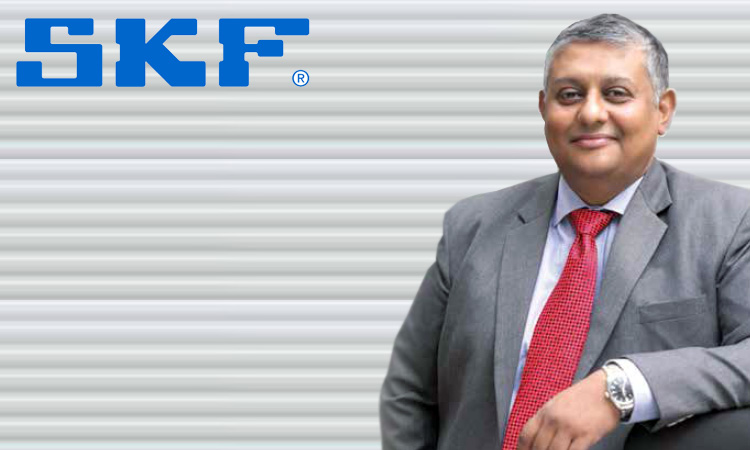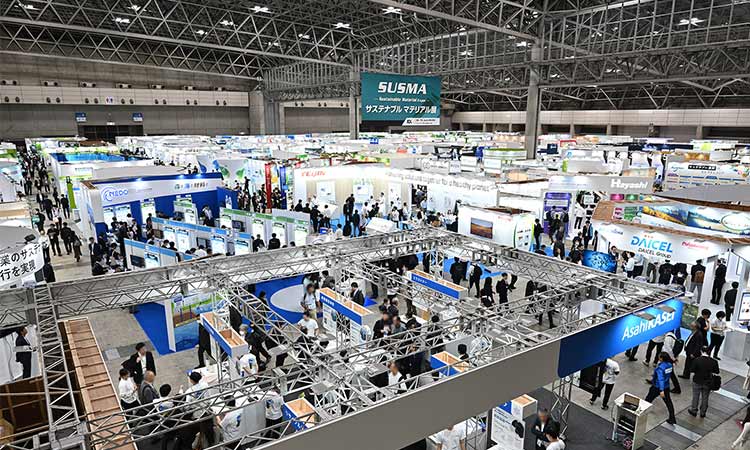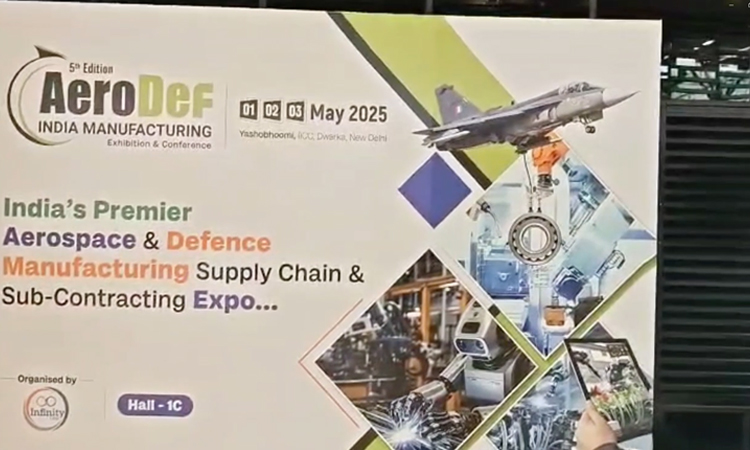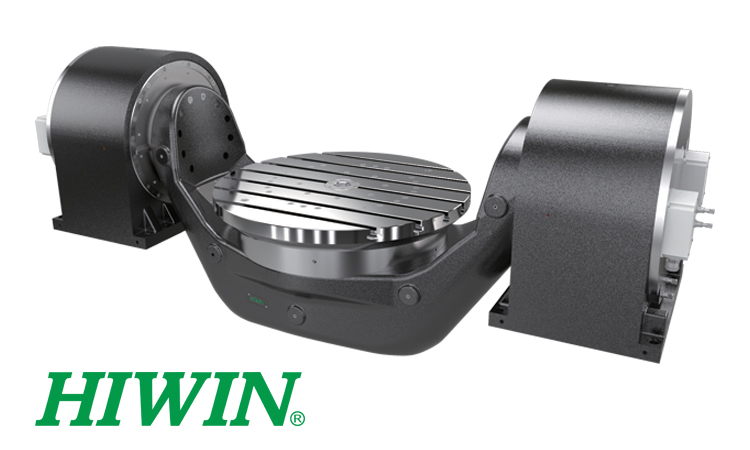Highly-Functional Material Week Osaka 2025 Positions Japan at…

SKF India Ltd | Bearing Manufacturer | Engineering Review – Bearing Issue
SKF India Ltd is synonymous with Bearings, and the company has been a leader in the bearing business in India since 1923. Today, with 6 manufacturing locations, 12 sales offices and 450 plus distributors spread across the country, SKF stays close to its customers across all automotive and industrial segments in India. SKF is far more than a Bearing manufacturer. Apart from bearings, for which SKF is well known, SKF engineers, manufactures and sells seals, lubrication systems, housings, condition monitoring products and offers services to its customers. SKF offers the full spectrum of products and services to ensure reliablity of the bearing. SKF’s REP (Rotating Equipment Performance) is a unique value proposition which leverages its product and engineering expertise with its deeper understanding of rotating equipment to provide an enduring solution to the customer to maximise their machine uptime and productivity, discovers Engineering Review in an interview with Sumit Mitra, Director, Industrial Business, SKF India Ltd.
Q. Could you tell us about SKF’s presence in India and the endmarkets and industries it focuses on?
SKF’s roots in India can be traced back to 1923, when a trading arm of SKF Group was set up in Kolkata. Since then SKF has been serving the Indian market with high quality bearings for over four decades. Today, with three manufacturing facilities located in Pune, Bangalore and Haridwar and with 12 sales offices across India and a supplier network of over 450 distributors, SKF continues to serve the varied markets with reliable solutions. We cater to varied industries like metal, cement, paper, textile, automotive, F&B, railways, etc
Q. Bearings are central to plant uptime and efficiency and SKF being the pioneers in bearing technology, got into CBM reasonably early as a value-added service to the clients. Tell us how SKF is helping customers transition to a fully functional online system (CBM)
Condition-based maintenance (CBM) involves measuring and monitoring parameters such as vibration and temperature to spot anomalies at an early stage, and is applied in many industries. With CBM, you can monitor the operation of critical systems inreal time and identify potential wear or faults in moving components as they develop. This allows for a more convenient scheduling of service or repair intervals.
Our SKF Insight, an intelligent bearing technology, enables bearings to communicate their operating conditions continuously with internally powered sensors and data-acquisition electronics, thus making condition monitoring more widely available, especially in applications where it was previously impossible or impractical. With our integrated diagnostic technology, our customers can get even better control over the life cycle of their machinery, leading to lower total costs with higher reliability and machinery uptime.
Q. What are the top three areas you have identified for digitalization with a focus on process optimization, cost reduction, and safety improvements?
- Process Automation
- Equipment Reliability
- Spare Parts Inventory
Q. Tell us about the new value proposition that you offer for customers?
Our unique value proposition known as Rotating Equipment Performance (REP) is a unique combination of product supply and services. SKF is not just a manufacturer of bearings, for which we are known globally, but we also manufacture and sell seals, lubrication systems, housings, power transmission products and condition monitoring equipment.
Through REP we leverage our product and engineering expertise with our deep understanding around rotating equipment to provide a solution to the customer to maximise their machine uptime and increase reliability. We do not only offer this as a consultancy, but actually deliver the physical solution along with the necessary condition monitoring and service capabilities.
With REP the customer needs to pay a monthly fee rather than the cost of the product and we get paid based on the performance we deliver. We essentially are moving from selling products to selling performance and uptime. We win when the customer wins and we take the risks along with the customer.
Q. Industries today have disparate automation and control systems of varying age. What is your advice to such aspiring organizations to initiate a digitalization journey?
Combining disparate systems is the least of the problems of digitization. This can be handled very easily through existing technologies. What the customer needs is to define the end goal of the digitalization initiative. Many companies embark on digitalization with no clear end goal. At the end of the day, what they have is all the process parameters and your equipment’s performance on a slick computer screen but not much else. The problem nowadays is an overload of data through digitalization rather than the lack of it. The data should be utilized effectively to make some meaningful decisions for enhancing machine performance.
Here AI and ML come into the picture; it can help you detect abnormal data patterns and share useful insights to predict emerging failure threats. This will boost your plant’s efficiency, reliability, and cash flow. Digitalization should be able to demonstrate a clear ROI.
Q. Given that a key factor for improvement in future manufacturing operations is the effective collaboration of people and systems in a digital, automated, and integrated fashion, what do you see is the most critical challenge in having a successful digitalization journey?
- Digitalization is a cornerstone in preparation for Industry 4.0. However, none of this is without challenge.
- Companies’ sizeable processes, together with an inaccurate perception of digitalization as the end goal, leave them open to failure.
- Identifying the most appropriate digitalization tools is a challenge and requires a clear understanding of your digitalization journey.
- There’s also a perception that digitalization is a young company’s game. Strong IT enabled Infrastructure is the key factor to succeed.
- Lastly, we should get the plan right in structuring our MES including the organizational drivers.
- As digitalization requires a significant cultural shift. It raises several questions such as: How will digitalization change work in the future? Will openness and increased transparency place services under greater scrutiny? What about too much digitalization and the growing data protection requirements? Which party owns the data in a collaboration and what assurances can be provided that only the necessary data is shared?
- At SKF, we are working with digitalization not as the end goal, but as the means to materialize our vision of providing customers with a world of reliable rotation.
Q. Given the complexity in deciding the right methodology, what is your suggested approach to drawing up a digitalization roadmap for a manufacturing organization?
Define your objectives of digitalization, Identify a partner who is not able to only work on digitalisation but also work with your equipment and implement the necessary solutions on the ground, Ask for the ROI, Look for previous experience or a POC before committing, and Pilot at a section of the plant before rolling out across the organization.
Q. Like other segments, the Bearing Manufacturing Industry is also impacted adversely by COVID-19. How could you overcome the crisis?
- We responded in an agile manner to the crises. During the lockdown we focused on keeping people engaged through multiple trainings and by focusing on many long pending projects that we always wanted to do but never got the time
- We focused on getting our teams back at the factories and offices as early as possible, since the initial exuberance of ‘Work from Home’ quickly gave way to loneliness and boredom
- We ensured all safety norms and hygiene processes to ensure employees were at ease when coming to the work place
- At our factories we set up isolation facilities to accommodate our employees since many of them could not isolate at home due to space constraints
- We interacted continuously with our customers through the lockdown and planned to meet their needs whenever they started up
Q. What are your growth plans and strategies to stay ahead in the prevailing, highly competitive environment?
We see the REP way as the future. We would ideally like to be in a position to get paid by our customers based on their production output or uptime rather than the cost of the bearings and other products that they consume. This is a true partnership model and I can proudly say as of now that SKF is the only company that is ready to travel this path with the customer.









